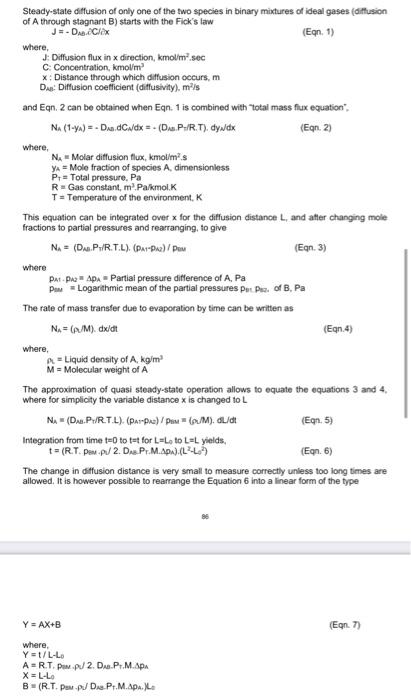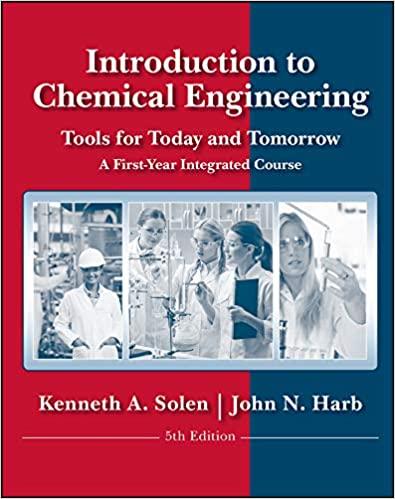Answered step by step
Verified Expert Solution
Question
1 Approved Answer
a. Derive the equation 2 for the species A diffusing through stagnant B and then integrate it to obtain the Equation 3. b. Derive the

a. Derive the equation 2 for the species A diffusing through stagnant B and then integrate it to
obtain the Equation 3.
b. Derive the Equation 4 and use to obtain the Equation 6.
c. Rearrange the Equation 6 to obtain the Equation 7.
Step by Step Solution
There are 3 Steps involved in it
Step: 1

Get Instant Access to Expert-Tailored Solutions
See step-by-step solutions with expert insights and AI powered tools for academic success
Step: 2

Step: 3

Ace Your Homework with AI
Get the answers you need in no time with our AI-driven, step-by-step assistance
Get Started


